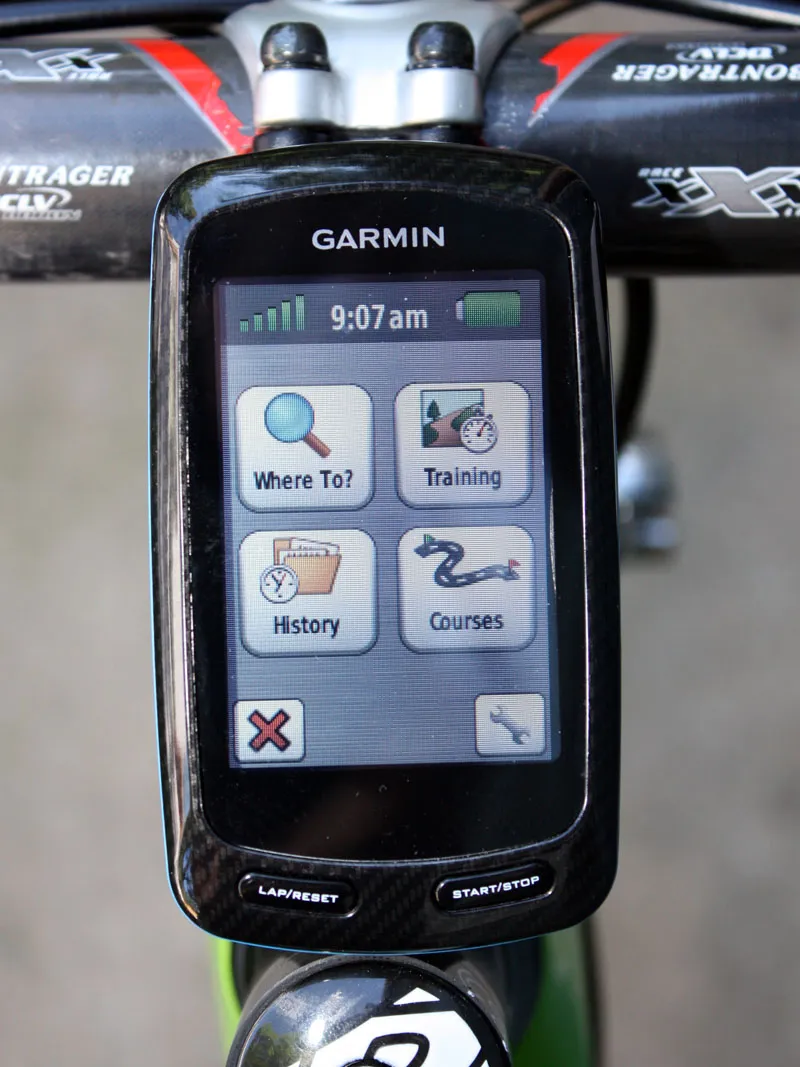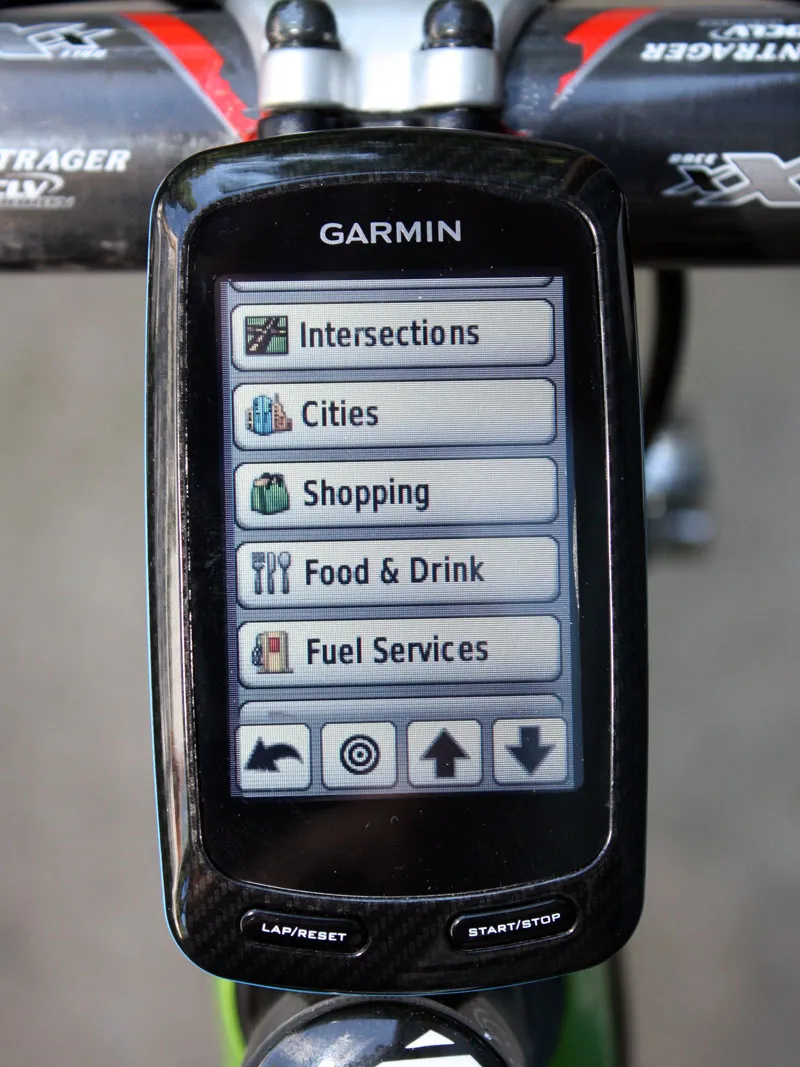Garmin today officially announced the pending release of its new Edge 800 GPS-enabled cycling computer, complete with full satellite navigation capabilities plus a large full-color and backlit touchscreen interface.
Appearance-wise, the Edge 800 is similar in shape and styling to the current Edge 500, though upsized by roughly 20-30 percent. In terms of functionality, though, it's much closer to the bigger Edge 705, and yet the 800 boasts a bigger display than either one thanks to the more efficient packaging of the touchscreen that omits all but three physical buttons. Depending on the configuration you choose, up to ten pieces of information can be shown on the 37x55mm screen with each digit measuring at least 5mm tall.
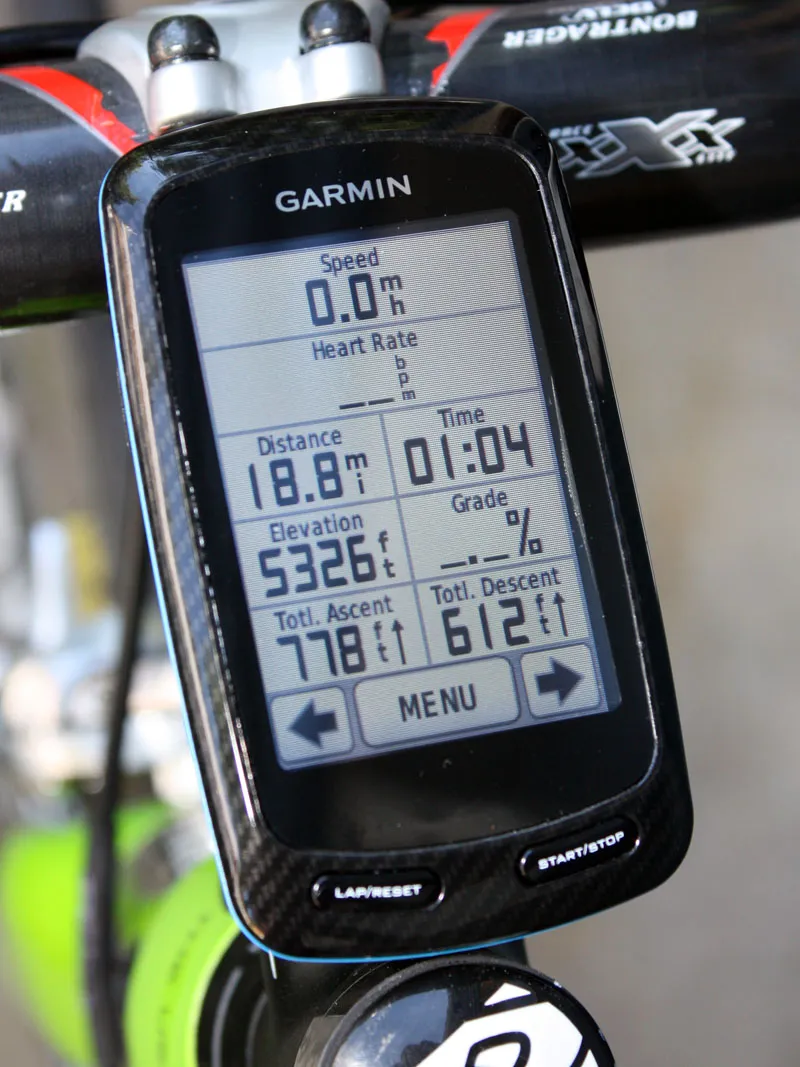
Main ride data can set in a vast array of configurations with up to ten pieces of information spread over five lines
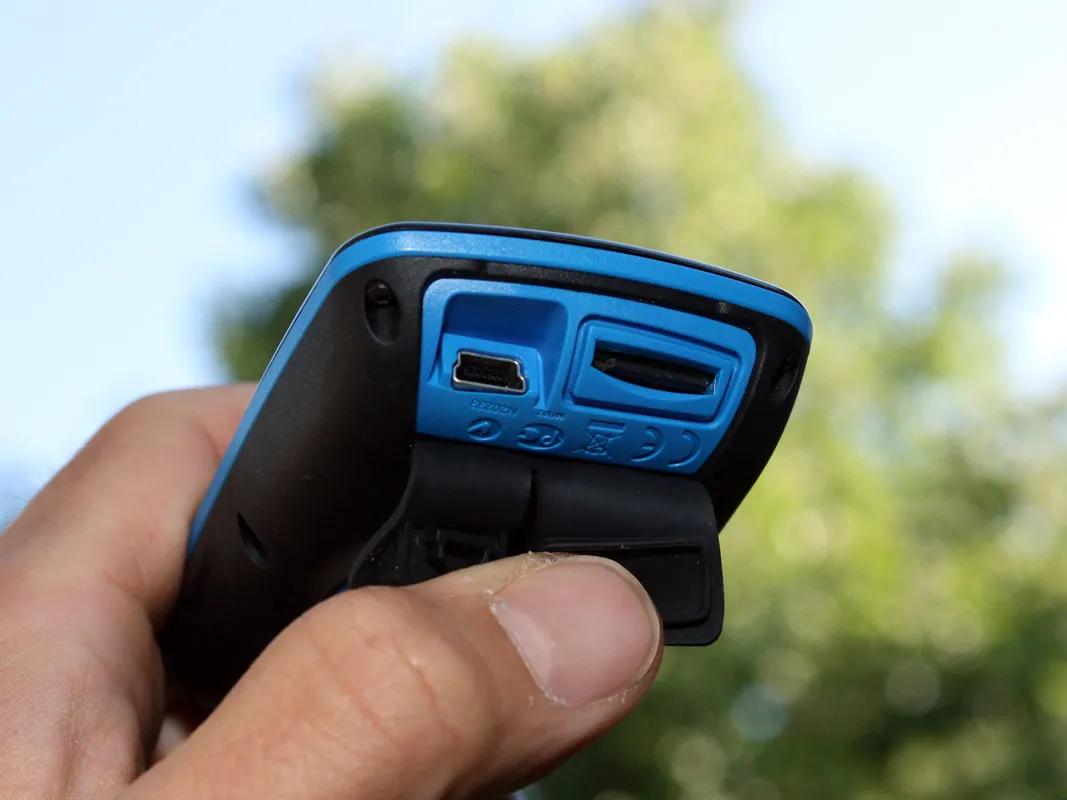
Rubber gaskets cover up the microSD card and mini-USB ports
A hidden microSD card slot accepts any number of Garmin's City Navigator or TOPO maps for your choice of turn-by-turn directions or a 1:24,000-scale topographical view of the surrounding terrain – and either can be displayed in a new bird's-eye perspective or the usual 2-D environment. Subscribers to Garmin's BirdsEye Satellite Imagery service can even upload high-resolution satellite images to the Edge 800 and combine them with the other navigation data for an even more realistic view.
Other features include a claimed 15-hour battery life, an ANT wireless receiver for integration with various third-party power meters or the optional speed and cadence sensor, faster satellite location, and Garmin's latest quarter-turn handlebar or stem mount. As always, there's no calibration necessary, either, and the unit's new firmware swaps more easily between different bikes for more accurate calorie counts and self-switching system configurations.
Garmin will offer the new Edge 800 in two configurations: a standalone version for US$449.99 or a preconfigured bundle for US$649.99 that adds a wireless speed and cadence sensor, a City Navigator microSD card, and Garmin's new premium heart-rate monitor strap.
Even though Garmin has only just today officially announced the new Edge 800, we've conveniently already been playing with a preproduction model for the past few days and can report on at least some of its performance firsthand.
First off, the new touchscreen interface and updated firmware makes for notably more intuitive navigating of the various menus than before and the appropriately sized 'buttons' are easy to hit even while rolling along at speed or with sweaty and/or dirty fingers (unfortunately we haven't yet taken our test unit off-road so we can't say how well it works with full-finger gloves).
Main ride data can be split across three status screens, though with up to ten pieces of info available it's not often that you need to stray away from the main one. We configured our tester to show all of our important ride data on one page, important time info (such as time of day and sunset) on another, and key post-ride data on a third.
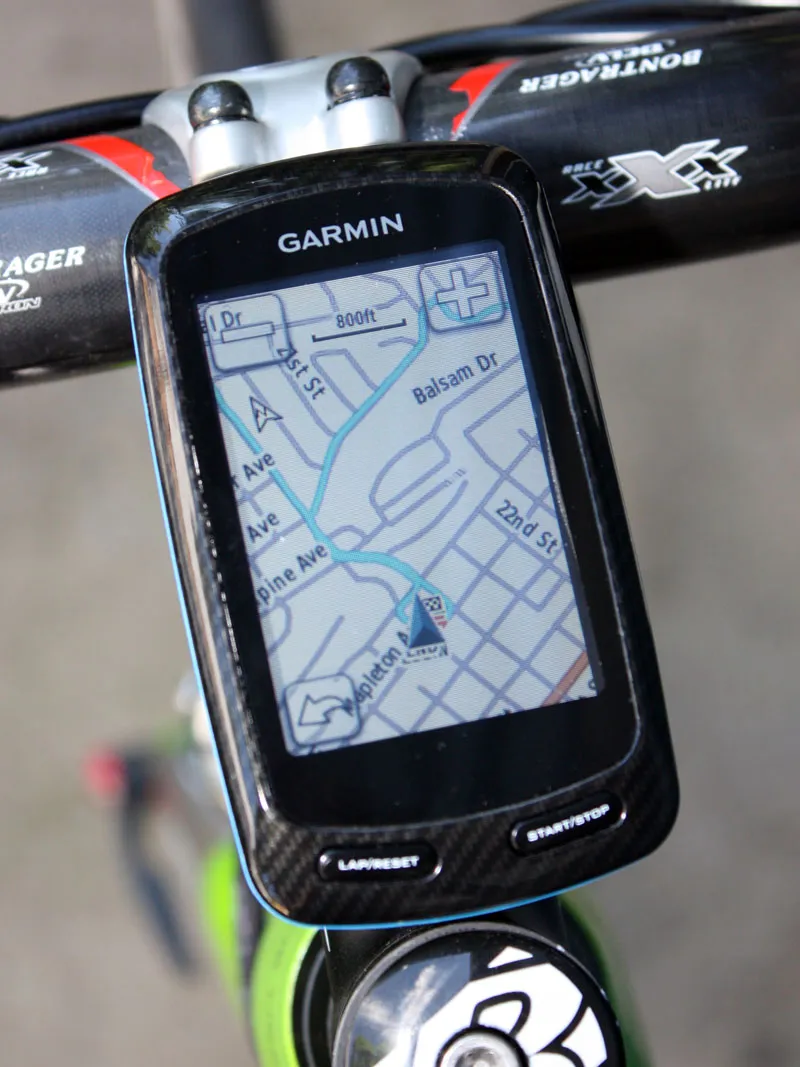
The new Edge 800 will offer either turn-by-turn directions on the road or a topographical perspective depending on what microSD card you've loaded
On-road navigating shows off Garmin's wealth of experience in the area with intuitive destination selection and an impressive array of points of interest such as convenience stores and gas stations – critical info if you're close to bonking. The easy-to-follow turn-by-turn directions have also been handy when we've been running errands on our townie or even when driving, though in the latter situation the screen might be a touch on the small side.
Setup is easy, too, though with the massive array of options on tap it's best to reserve a fair bit of time to get through it all. And for those of you who still rely on heart-rate data, the new premium soft-touch strap is simply superb. It's not only heaps more comfortable to wear but it records electrical signals as soon as you put it on (no more wetting of electrodes!) and thanks to the detachable transmitter it's officially approved for hand washing (though we're still going to test it in a washing machine on delicate cycle).
Our preproduction sample isn't without its glitches, though. As of right now our percent grade display isn't working properly (though the post-ride data shows that the unit is properly recording elevation changes) and when the backlight isn't turned on, the numbers can look a bit fuzzy around the edges.
Garmin senior media relations specialist Jake Jacobson tells us that the development team is close to resolving the percent grade issue and is still debating final display color and contrast options for better visibility. Thankfully, both hiccups will be repairable via an easy firmware upgrade.
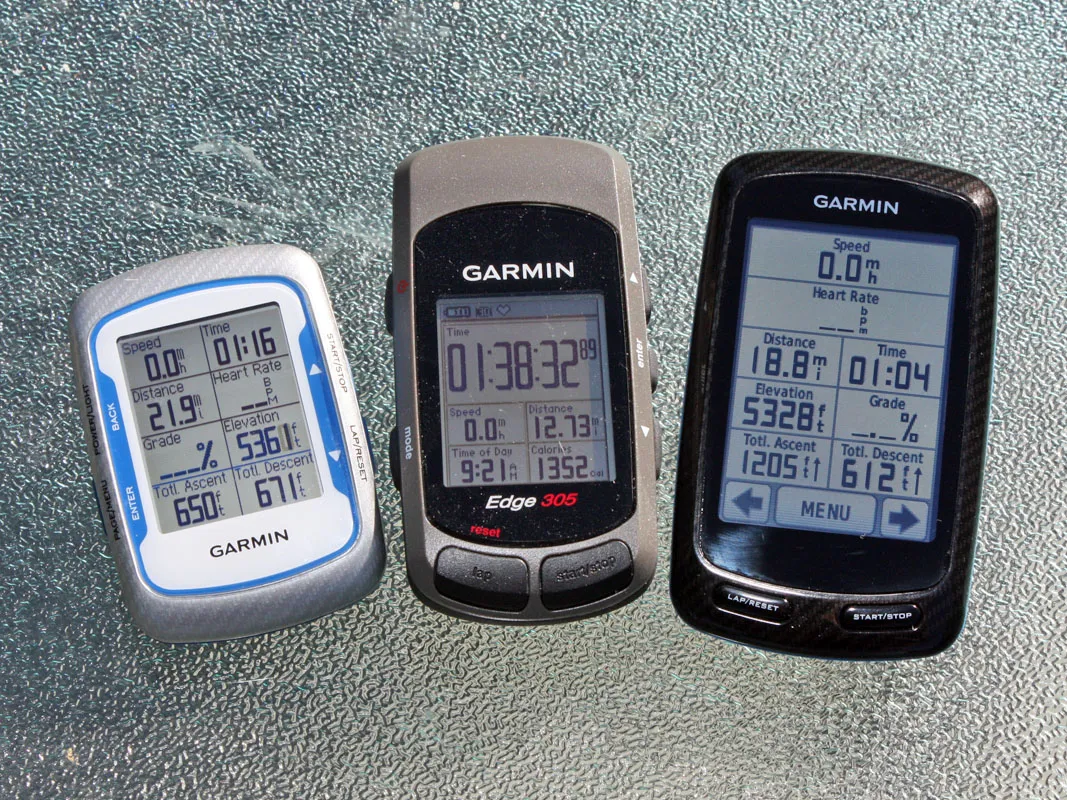
The new Edge 800 (right) is notably longer and wider than the Edge 500 (left) but only just slightly wider than the Edge 305 (centre)
We'll post a more thorough review once we've logged more hours on our tester and had more time to run through all of the functions but initial impressions are mostly favorable. Given the cost, current Edge 705 owners may not be overly compelled to upgrade, but Edge 205/305/500 users might find the new 800 to be the 'all in one' GPS unit they've been waiting for.


